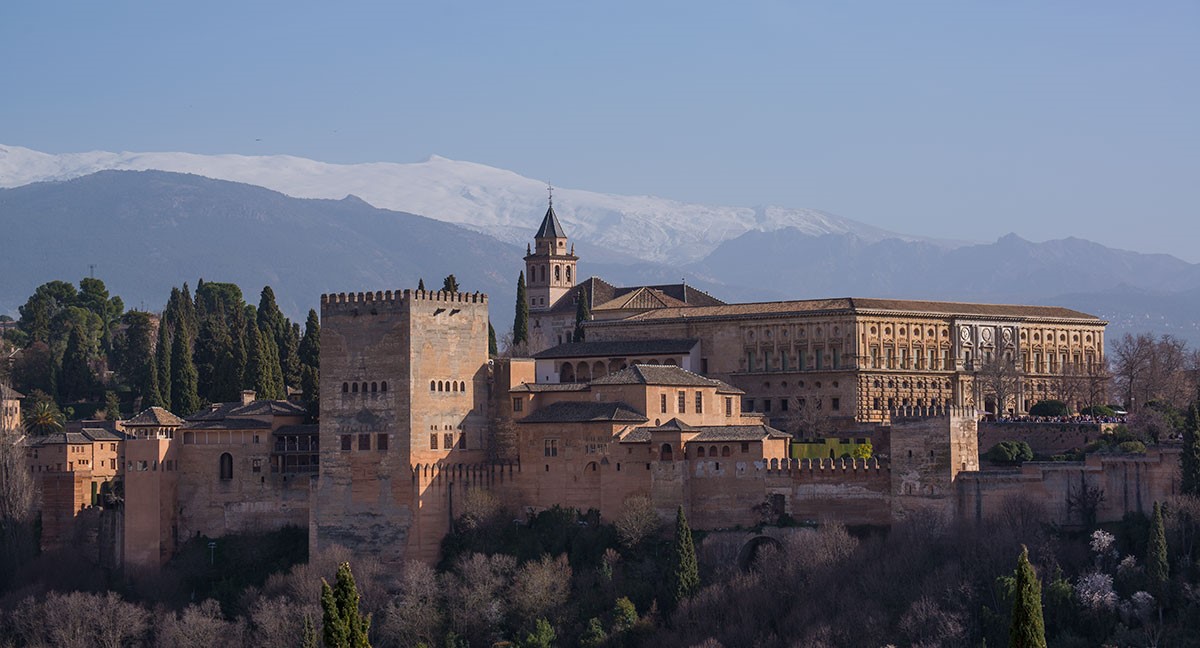
Granada is one of Spain's most popular tourist destinations, set in the Andalusia region and roughly 120 km inland from the coast the city is flanked by the snowy peaks of the Sierra Nevada mountains. The magnificent palace and fortress of the Alhambra, visible from almost everywhere in city, dominates the skyline. University students keep downtown area lively, while the Moorish neighbourhood of Albaicín is a perfect place for a stroll. And, with free tapas in most of the bars and some great value restaurants, Granada is the perfect city break which won't break the bank.
Getting to Granada is also relatively straightforward and hassle free. The international airport in Granada serves around 13 European destinations, EasyJet operate direct (seasonal) flights to/from both London Gatwick and Manchester whilst British Airways offer direct flights to/from London City. Unless booked in advance though, these flights can get quite expensive and have limited availability. Another good option is to Fly to Malaga and then rent a car or take public transport from there (journey time 1.5 - 2 hours). On a recent trip we flew to Malaga from Gatwick with Norwegian (around £150pp) and then hired a rental from Firefly for 3 days (around £90). The journey by car took us about an hour and a half from Malaga Airport to the city of Granada. A point to note here is that if you are staying in a downtown hotel or in the Albaicin area then there will most likely be nowhere to park your car! There are however a number of 24 hour parking garages in the city centre which charge around EUR 20 per 24 hours, seewww.lovegranada.com/transport/granada-parking/ for more information. The best way to get to Granada from Malaga using public transport is by bus, you can find information of times and prices here.
The best times of year to visit Granada are generally outside of the European school summer holidays as the whole of the region becomes very busy and crowded and daytime temperatures can soar in excess of 40 degrees. We suggest that visiting in either spring or autumn time will allow you to have a quieter and calmer experience along with more pleasant temperatures. We recently visited Granada towards the end of February, with beautiful clear days, daytime temperatures of 18 to 20 degrees and being outside of the main holiday season made for a perfect escape from the cold and rain of the UK! Southern Spain is actually quite dry and mild year round so you would struggle to find a bad time of year to visit.
On our recent trip we stayed 3 nights in Granada which we found to be perfect to see all of the sights and experience what the city has on offer.
Day 1 - Arrival and exploring The Albaicín
The ideal time to arrive in Granada on day one is around lunch time or early afternoon, this will give you a good few hours to check in to your hotel and spend the rest of the afternoon and early evening exploring Granada’s Medieval Moorish neighbourhood, The Albaicín. Fortunately for us our beautiful home for the next 3 days - Hotel Casa 1800 was perfectly located in the heart of the Albaicin.
The Albaicín is a part of Granada to really explore, up close and personal. It's full of atmosphere and feels quite different to any other part of the city. It’s not that big an area but feels larger due to the fact that it occupies the steep slope that runs from down by the Darrow river and one end to the St Nicholas viewpoint at the top. The viewpoints (or Miradores) offer the most stunning photo opportunities, with far reaching vistas of The Alhambra and across Granada with the snow capped Sierra Nevada in the background. Besides a host of cute little bars and restaurants - most with outside terraces, there's lots to see. From Churches, convents and carmens to colourful flower-filled balconies, and swathes of Bougainvillea draping every wall.
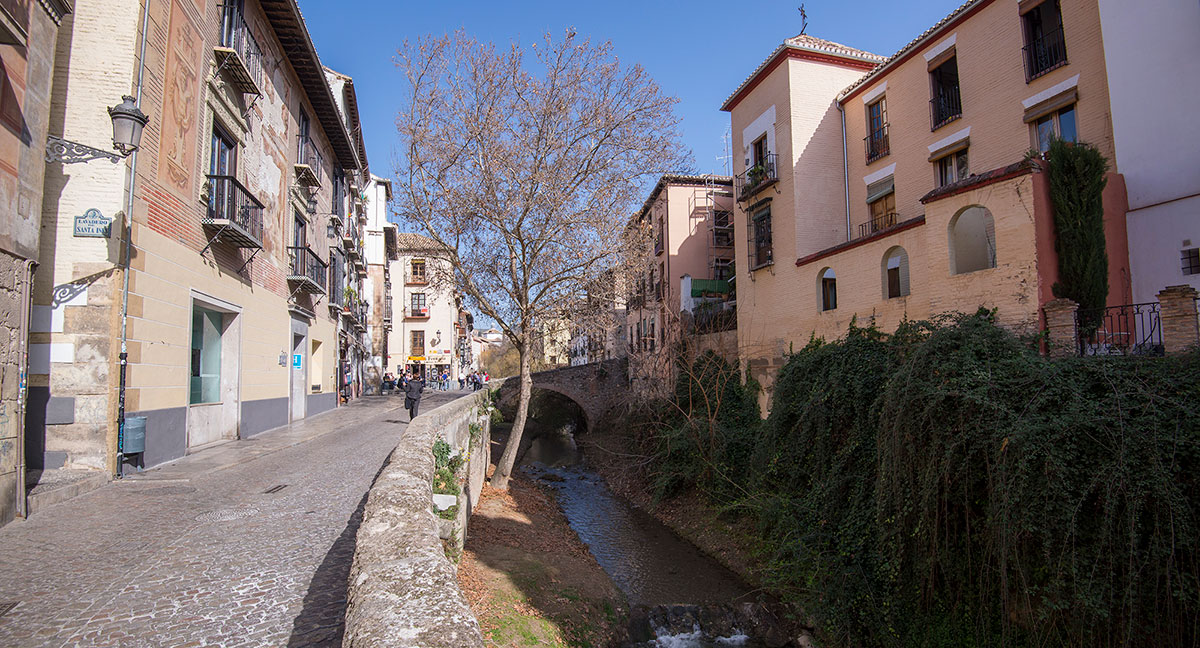
The Albaicín, Granada
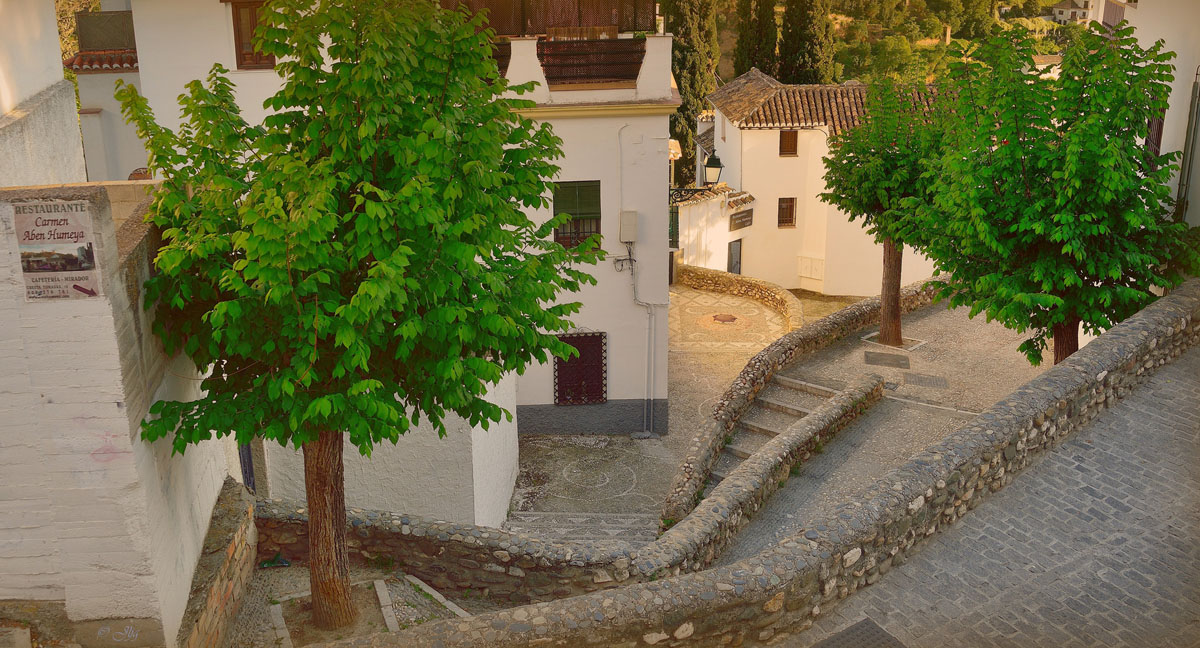
Backstreet of The Albaicín, Granada
The Albaicín was declared a World Heritage Site in 1984 and the main highlights include:
Churches of El Salvador, San Gregorio, San Cristobal, Santa Ana, San Juan de Los Reyes, and San Miguel Bajo.
The 11th century Ziri Wall.
The Trillo Cistern and the Baths.
Casa de Porras - now belonging to the University of Granada - originally a 16th century Moorish house, you can walk right into the foyer to see it.
House of the Masks, on Calle Páges - 17th century.
We had a great time exploring the Albaicin, particular highlights for us were the St Nicholas viewpoint at around sunset for photographs, Taberna 22 at Plaza San Gregorio for a drink on the terrace and El Trillo Restaurant for dinner.
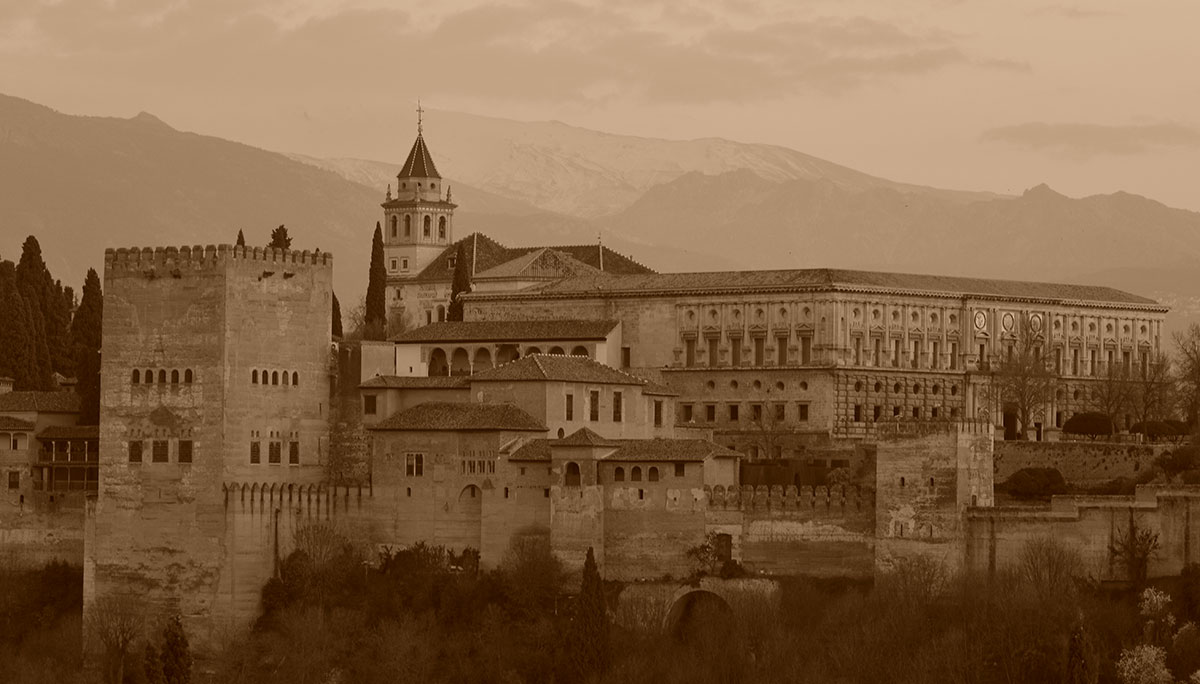
The Alhambra, from St Nicholas Viewpoint
Day 2 - The Alhambra
The Palace and Fortress complex of the Alhambra (“The Red One”, so called because of its reddish walls) is Granada’s principle tourist attraction. Originally built in around 889 AD on the remains of Roman fortifications, it was left largely untouched until it was renovated and rebuilt in the mid-13th century by the Nasrid emir Mohammed ben Al-Ahmar of the Emirate of Granada, who built its current palace and walls. The Alhambra is located on a strategic point, with a view over the whole city. The Alhambra does get very busy and tickets to the Nasrid Palace are limited in number per day, therefore it is best to plan your visit and book your tickets in advance. You can book tickets through the official website: https://tickets.alhambra-patronato.es/en/ There is also a wealth of information to help plan your visit available at: http://alhambra-patronato.es/index.php/Visit-the-Alhambra/8+M5d637b1e38d/0/
Getting to the Alhambra from the city is very easy, you can hike up the hill from the bottom starting on one of these streets depending on the direction you have come from; Cuesta Gómez (From Plaza Nueva), Cuesta del Realejo (from plaza del Realejo), Cuesta de los Chinos ( from Paseo de los Tristes). The walk to the top will take around 20-25 minutes and is a good test of your fitness! An easier way is to simple take a bus, routes C3 and C4 will take you from the city centre up to the Alhambra in around 10 minutes.
You should plan for around 3 to 3.5 hours for your visit to the Alhambra. A popular route order (which we took) is to start at the Alacazba then work you way through to the Palace of Carlos V, The Nasrid Palaces and then on to Generalife.
The Alcazaba is an area which served as a military function. The main points of interest on your visit will be the terrace of the Bucket Tower (Torre del Cubo), the ramparts of the northern wall, the Arms Square (Plaza de Armas) with an urban military district (Barrio Castrense), the terrace of the Arms Gate (Terraza de la Puerta de las Armas), the Watchtower (Torre de la Vela) and the Ramparts´ garden (Jardín de los Adarves).
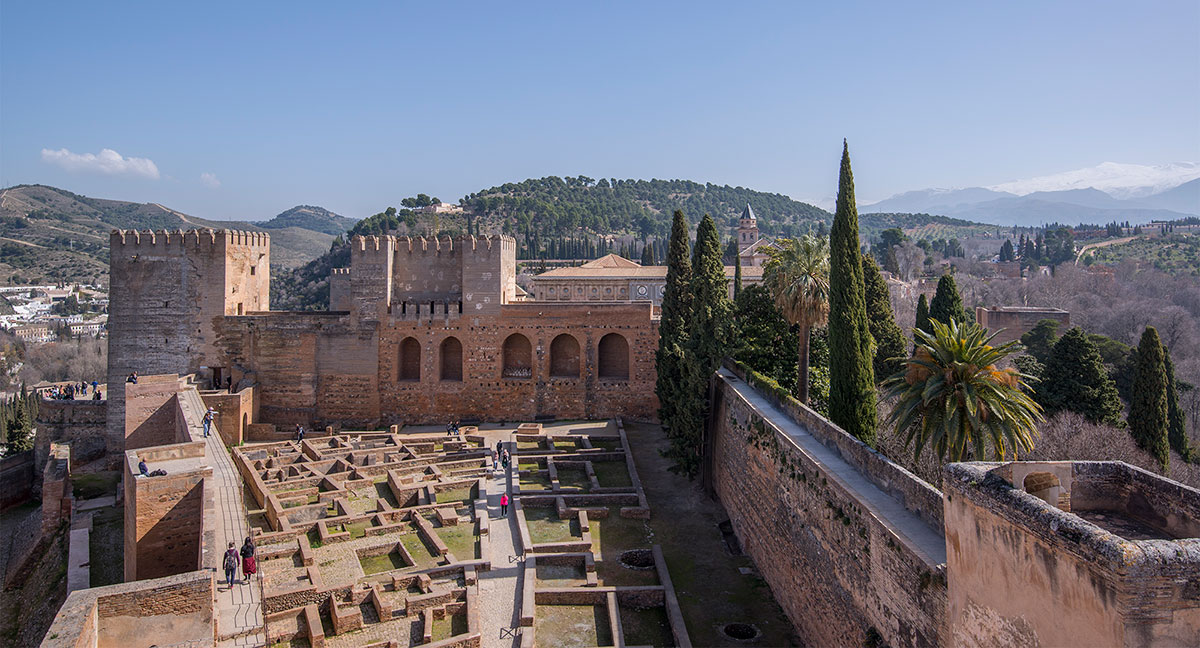
The Alcazaba from Torre del Cubo
Carlos V, King and elected Emperor, decided to build his Palace in the Alhambra in 1526 following a roman style design. His aim was not to establish his capital in Granada but to build another royal residence, significant for its symbolic value and location: a Muslim citadel conquered by his grandparents, the Catholic Monarchs.
The Nasrid Palace is the main feature of the Alhambra, this is what you have paid your money to visit! One thing you will definitely need is the accompanying audio guide (headphones) which you can rent from the little stalls in the square between the Alacazba and the entrance to the palace. The tour of the palaces takes roughly 60 - 90 minutes but you can go as slow of fast as you want, just make sure you are there promptly at your allotted time. The points of interest inside the palace are as follows:
Mexuar: Hall, Oratory, Gilded Room and Patio.
Comares Palace: Court of the Myrtles (Patio de los Arrayanes), Hall of the Boat (Sala de la Barca), the Ambassadors´ Hall (Salon de Embajadores).
Palace of the Lions (Palacio de los Leones): Sala de los Mocárabes, Patio, Sala de los Abencerrajes, Hall of the Kings (Sala de los Reyes), Hall of the Two Sisters (Sala de Dos Hermanas), The Emperor's Chambers, Belvedere, Court of the Wrought Iron Grille (Patio de la Reja), Garden of Lindarja.
El Partal: Gallery of the Palace (Portico del Palacio), Gardens and walkways, Rauda, Palace of Yusuf III and the Towers Walk.
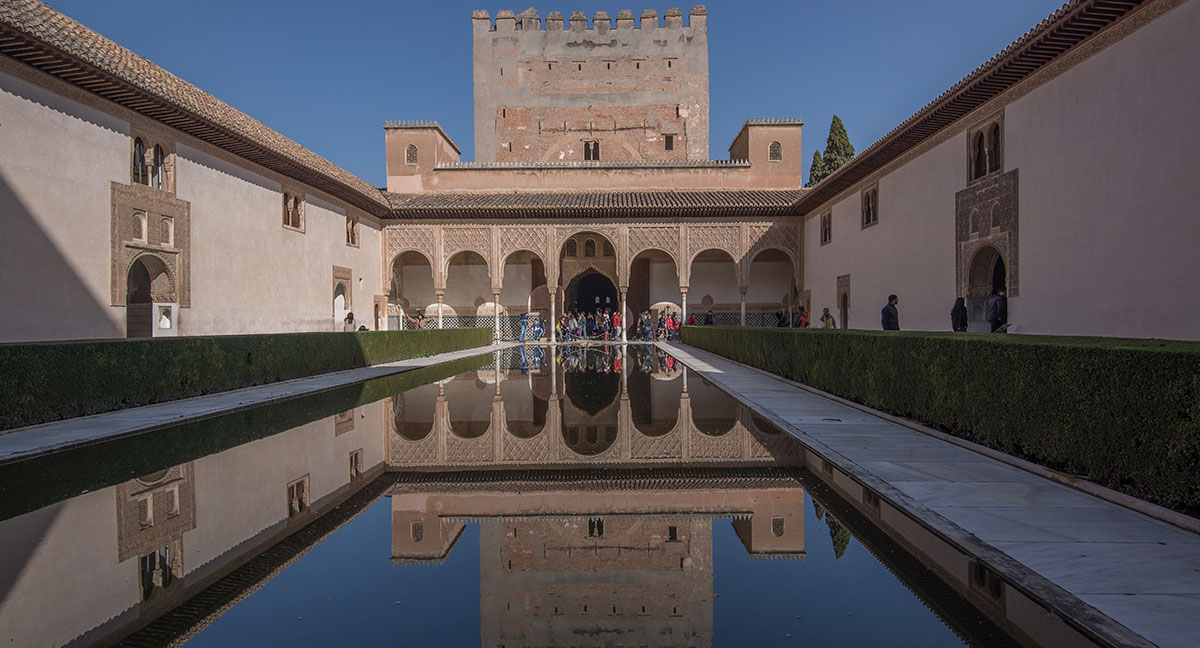
Court of the Myrtles, Nasrid Palace
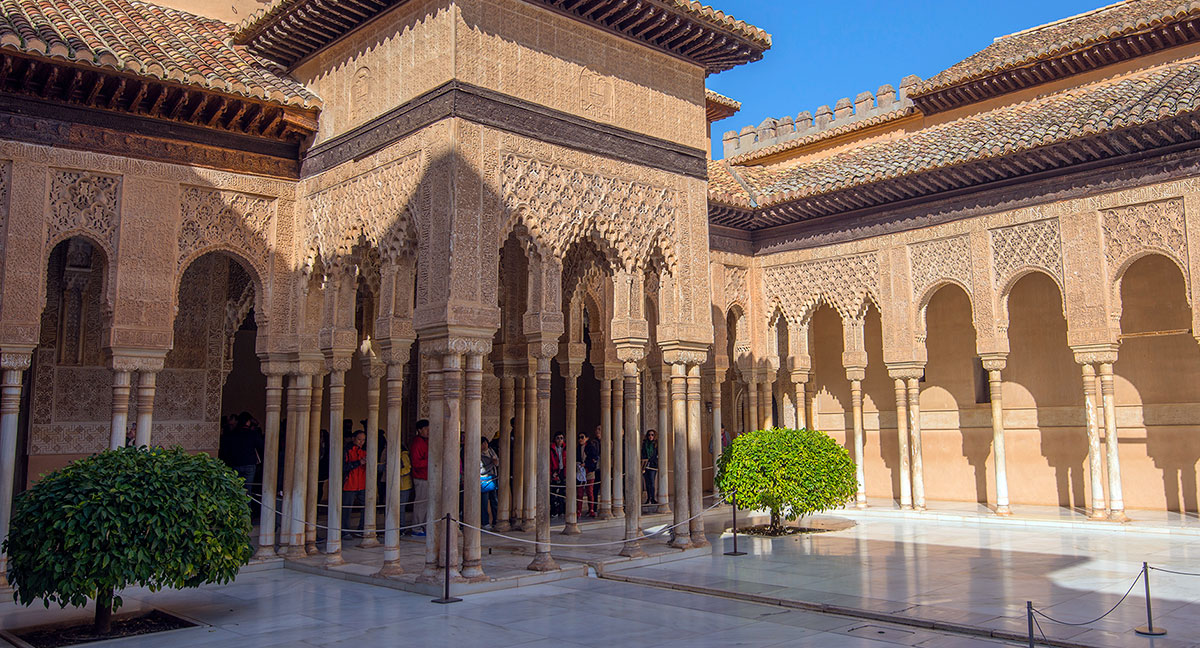
Palace of the Lions, Nasrid Palace
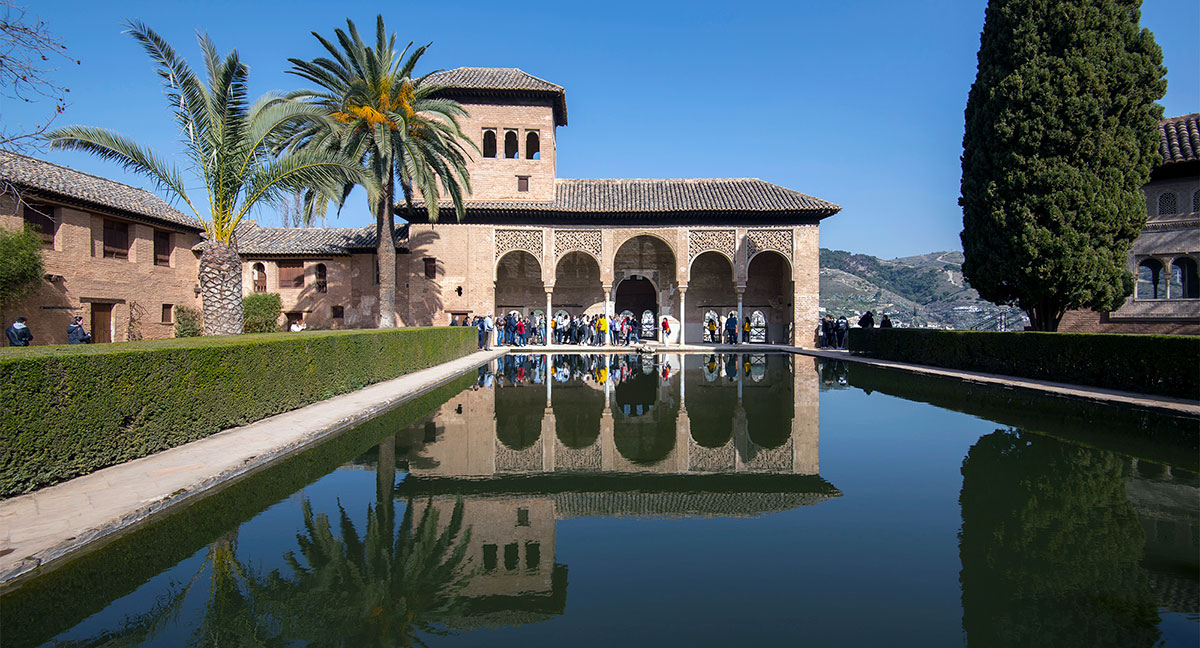
Nasrid Palace
The Generalife was built between the 12th and 14th Century. The palace was used by the Muslim royalty as a place of rest. We didn’t get the chance to fully explore the Generalife area due to Charlotte suffering a leg injury and being quite tired by the time we got there, it is however well worth exploring and you can find out much more information on the official Alhambra website: http://alhambra-patronato.es/index.php/The-Generalife/31+M5d637b1e38d/0/
Day 3 - Exploring the City & Tapas
After a busy day visiting the Alhambra a good way to spend your final day in Granada is to simply explore the rest of the relatively compact city centre whilst taking a few pit stops at the numerous tapas bars. Granada Cathedral and the adjoined Royal Chapel are worth a visit along with the The Alcaicería (Old Bazaar) located in the near vicinity. Calle Alcaiceria, is the only remaining section of the once Great Bazaar of Granada, which consisted of over 200 stalls selling Arabic silks, spices and other precious goods. Today, it is a popular tourist shopping area, selling lamps, clothing, goat leather bags along with traditional buys of bulk teas and spices. Granada has many great tapas bars, two of our favourites were La Vinoteca and Restaurante Carmela.
Where to stay, Eat and Drink
We stayed at the excellent Hotel Casa 1800 on Plaza Benalúa, a small boutique hotel set in an old sixteenth century building located in the historic center of Granada. The rooms here were very comfortable there was a good selection at the breakfast buffet and staff were super helpful. The location is perfect for exploring all of what Granada has to offer.
There are many good restaurants in Granada, our favourites are as follows:
La Vinoteca for tapas or dinner
Restaurante Carmela - great for lunchtime tapas
El Mercader - great for dinner or a long lunch, booking essential
El Trillo Resturante - fantastic for dinner in the Albaicin, good food and friendly service.
Granada is somewhat limited in terms of nightlife however we did find a gem of a bar, Tragofino on San Matias does excellent cocktails at very reasonable prices and plays great music.
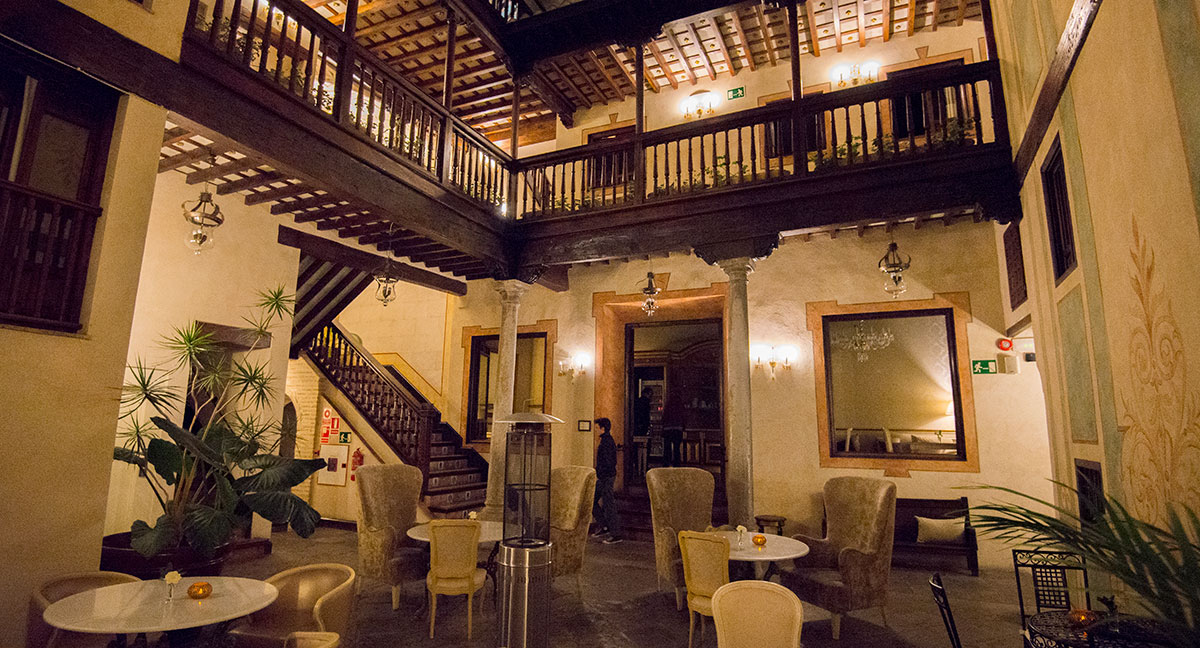
Covered courtyard and breakfast area at Hotel Casa 1800
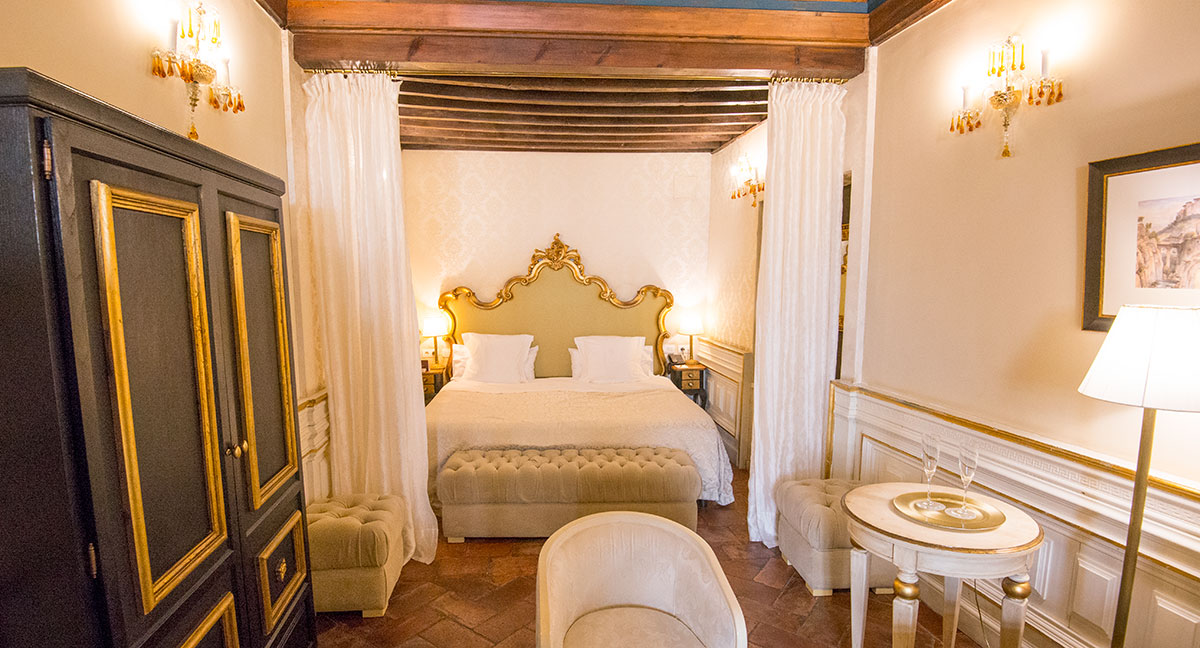
Our room at Hotel Casa 1800
On our last morning Jose on the front desk suggested a couple of stops we could make on our journey back to Malaga (as we had a late flight). We visited the seaside town of Neja and the beautiful hilltop village of Frigiliana before dropping our hire car back at the Airport.
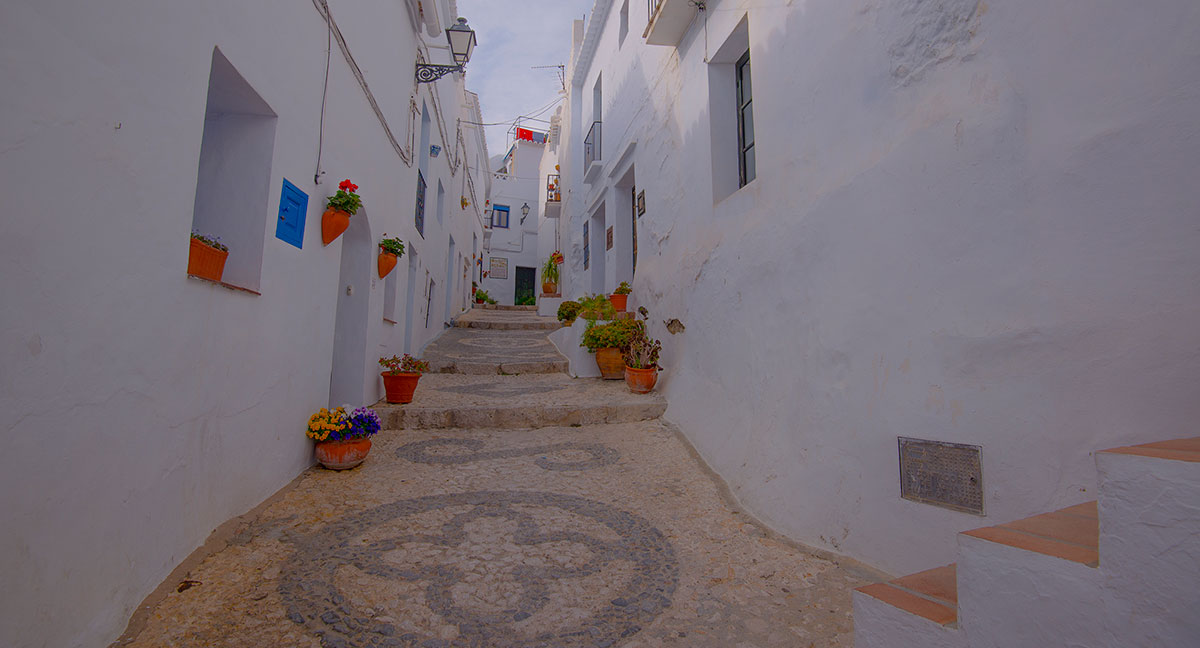

Leave a comment